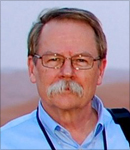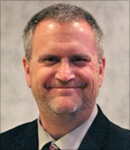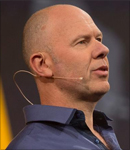How can we, the industry, become interoperable? It's a question on the minds of most utility executives and service providers. And while the answer is a simple word, collaboration, how we, the industry, achieve this vision is a little more elusive. In this installment of The Internet of Things Starts with the Grid of Things, grid leaders from across the world have chimed in with their thoughts on where we are today and where we are headed.
The Internet of Things Starts with the Grid of Things Part 4

“I want my toaster to talk to my Utility.”
–Zac Canders
The Internet of Things Starts with the Grid of Things is a six-part tell-all editorial series that’s been documenting the journey of interoperability and the role next generation software plays in the utility industry. For those of you that missed it, Part 1 announced the Grid of Things. It was complemented by Part 2, a step-by-step manual on how to embrace interoperability. Part 3 laid forth the definitions of the individuals responsible; the software developers, product managers, and technical experts, and Part 3.5 was the how to guide for translating the global value of data.
In Part 4, “The Role of Collaboration,” the series dives deep on how the industry is changing from collaboration, and what better way than to meet directly with those driving the collaborative journey in the utility industry.
Esri - Bill Meehan, Director, Utility Solutions
The word Interoperability has eight syllables. Our friends at Microsoft gave the sentence, “What is meant by Interoperability?” a Flesch-Kincaid readability grade level of 14.5, which means someone has to be a junior in college to even understand the sentence. I like the two-syllable word connect better. Modern IT platforms are based on the simple principle of connecting people. Connecting for the purpose of giving and getting information or stuff. I connect with Amazon. I tell them what I want. They know what I like. I connect with my credit card. I get my stuff. Platforms are all about connection. The word interoperability conjures up standards, extraction, transfer and load data. I can picture the dearly departed comic, George Carlin saying the word “interoperability” with a deep, exaggerated frown and low intimidating voice. Then he smiles with a huge exaggerated smile and says, “Connect” with a happy voice.
If we think about how we connect with parts of our business, the value is enormous. Think about how we all hate it when we are not able to adequately connect with businesses that have not adopted a platform of connection. No one returns my text, emails, phone calls. Think about when we have to struggle with an IVR with all kinds of information about our birthday, our address and our favorite Taylor Swift song, only to have to repeat the information to a real person after a long wait listening to music.
The single value of connection is to make interactions with different parts of society easy. In a power company, it means having a way to connect field crews to the office to the call center freely, immediately and without hassle. It could mean providing data from the city to the utility company immediately; it saves time, money and guess what? It makes people work better. Gets things done.
Between the Poles - Geoff Zeiss, Principal at Between The Poles
It is estimated that the lack of reliable information about the location of underground utility infrastructure costs the U.S. economy $1.5 trillion dollars annually in direct costs and several times this in indirect costs. One of the factors contributing to the deplorable state of information about underground infrastructure is poor interoperability.
The exchange of underground utility information between infrastructure organizations within the same jurisdiction or in adjacent jurisdictions has been greatly hampered by incompatible and incomplete data. Recently the Open Geospatial Consortium (OGC) has initiated a multi-year project to develop interoperability standards for underground infrastructure.
About four million excavations are carried out on the UK road network each year to install or repair buried utility pipes and cables. Not knowing the location of buried assets causes practical problems that increase costs and delay projects, but more importantly, it increases the risk of injury for utility owners, contractors, and road users. The problems associated with an inaccurate location of buried pipes and cables are serious and are rapidly worsening due to the increasing density of underground infrastructure in major urban areas. In the U.S., it is estimated that an underground utility is hit about every minute. Underground utility conflicts and relocations are the number one cause for project delays during road construction.
Nicole Metje of the University of Birmingham has researched the direct costs of utility strikes in the U.K.
- Electricity £ 970
- Gas £ 485
- Telecom £ 400
- Fibre-optic £ 2,800
- Water £ 300-980
Direct costs include the costs of sending a crew to assess and repair the damaged pipe or cable. Indirect costs include the impact of traffic disruption as a result of the strike, any injuries and other impacts on the health of the workers directly involved or people in the immediate neighborhood, and the lost custom that businesses would have experienced as a result of the traffic disruption. Dr. Metje has found that the true costs associated with utility strikes are much higher than the direct costs. Her estimate is that the true cost is about 30 times the direct cost. A number of return on investment (ROI) studies have identified the significant benefits of knowing where underground utilities are located. A USDOT-sponsored survey conducted by Purdue University in 1999 quantified a total of US$4.62 in avoided costs for every US dollar spent on accurately location underground utilities. Although qualitative savings (for example, avoided impacts on nearby homes and businesses) were not directly measurable, the researchers believed those savings were significant, and arguably many times more valuable than the quantifiable savings.
Currently, the exchange of underground utility information between infrastructure organizations within the same jurisdiction or in adjacent jurisdictions has been greatly hampered by incompatible and incomplete data. The Open Geospatial Consortium (OGC) intends to make a significant contribution towards facilitating improved information management, sharing and collaboration which should make infrastructure planning, operations and maintenance, and emergency response less costly and time-consuming, and more effective. The OGC has initiated a three-phase project to develop interoperability standards for underground infrastructure. The Underground Infrastructure CDS project is supported by the Fund for the City of New York and its sister organization, the National Center for Civic Innovation, the Ordnance Survey, and other organizations. The underground infrastructure data interoperability project will take two and a half years to complete and is intended to involve the collaboration of many cities, utilities, and engineering and technology companies.
Teradata - David Socha, Practice Partner, Industrial IoT
Given we’re talking specifically about interoperability, most thoughts so far have had an operational leaning. Which is fair, of course. More efficient/effectively integrated operations are what interoperability is primarily for. But I’d like to highlight what might be considered a consequential benefit of a focus on interoperability: rich, massive data sets ripe for analytics. This is a perspective you’d expect from a big data and analytics company - but then that’s the point of asking for lots of different perspectives, right?
Analytics deliver value at many points in the IoT value chain—from real-time (or near-real-time) decisions and actions in the field based on analytics at “the edge,” all the way to strategic analytics that take place back at the enterprise and inform long-term investment planning—and all points in between. There are many challenges in delivering an Analytics of Things architecture. One of them is having comparable data sets for analysis. Whether that’s understanding idiosyncrasies across sensor data sets, the vagaries of differing semantics across ERP or CRM systems, or even just getting to a baseline definition of an asset that IT, the asset management department … and then, also, a third-party business can agree on. Sound familiar? They should. Because as well as challenges for an analytics infrastructure, these are key challenges for interoperability.
Sad to say, I’m likely not as much of a genius or as insightful as I like to think I am. It all came down to collaboration. This group of gents grew up together in the utility, played golf together, lived in the same neighborhoods, but simply couldn’t and wouldn’t play nicely with each other.
The first stop in the interoperability journey comes with collaboration. Simply stated, this industry lacks collaboration. Internally within the utility, between utilities, let alone within the vendor community.
Utilities are notorious for fiefdoms. Collaboration is fun, so long as your particular feudal lord wins. When utilities get together to collaborate, they often promote their own agenda. When the standards wonks get together, their focus is on satisfying their own needs or generating revenue, e.g. how can I make some money at this, or maybe if I get my message as a standard it will reduce my cost downstream.
My standards committee experiences have been amongst the most dissatisfying of my life—long conference calls that accomplish nothing, meetings in locations that I can’t justify to my shareholders, and acronyms and terminology that no one understands—exclusionary behavior all around. Let’s look at the cycle time of standards ratification in our industry. It’s longer than the technology evolution cycle at this point in time. So, how do we expect the industry to evolve? Maybe a lack of evolution is the way people like it? It’s comfortable. Complacency? This isn’t a technology problem; this is a collaboration issue. The industry needs to set aside agendas and creating standards that move us forward.
Patrick Engineering - Mike Goggin, Director – Geospatial Services Team
Sitting at my drafting desk in 1993 applying as-built changes to a paper map, I got my first look at analytics. An engineer approached my desk and asked me to find how many miles of 1/0 OVHD wire we had in the City of Libertyville. I thought to myself, “Next they will have me hunting snipes.” The engineer then pulled out this extremely small measuring wheel and said he needed the information by the end of the week. After the shock wore off I went to work looking up what maps I needed, pulling them from the drawer(s), then going through each one finding the wire size and using the measuring wheel to record the miles. It took me three days. This was collaboration circa 1993.
After years of labor, tens of thousands of dollars, and the evolution of geospatial technology, this task now can be achieved by the engineers themselves and takes about five minutes—a definite step forward in collaboration. Oh, and that wheel is now a fixture next to the ink well and pens! But let’s be honest, the vision of the utility wasn’t to improve the process of calculating material in a particular geography; it was to increase the collaboration associated with outage management.
Interoperability is not just critical for the levels of integration and collaboration operational systems need in the changing world of 21st Century utilities. It’s also a foundation for the analytics-based decisions and actions that will enhance those operational systems, improve performance, and ultimately, inform the strategic direction of the future business.
Boreas Group - Robert Sarfi, Managing Partner Boreas Group
According to the Oxford English Dictionary:
Collaboration [mass noun] is
1 The action of working with someone to produce something.
“He wrote a book in collaboration with his son.”
2 Traitorous cooperation with an enemy.
“He faces charges of collaboration.”
In the context of interoperability for utility technology, I like definition two! Today I was talking about technology and data governance with a large, highly respected IOU. I described why I thought “Things” were broken, I quickly bonded with the executives because they said I could read their minds and understood them.
The existing outage management process relied on a dispatcher to review customer calls, then use a paper map to manually group them, and finally, to send a trouble crew to where they felt the trouble was located. This process was incrementally successful but took time and meant longer outages, loss of revenue, increased cost, and negative customer satisfaction. The new Outage Management Systems leveraged a connected model (electrical network) and analyzed customer calls based on how they were connected then more accurately predicted to a device. The automation of this process sped up the time it took to get a confident location to send the trouble crew. The result was a positive impact on reliability indices, financials, and customer satisfaction. This was a major step forward in increased collaboration.
Fast forward to today and now we are talking about IoT and the Grid of Things. The evolution of people, process, and technology is taking the utility to the next paradigm of collaboration. The goal is to move from reactive to predictive and then to prescriptive through the collaboration of sensors and analytics powered by location. We are seeing technology advancements coming in the form of devices like AMI meters and distribution SCADA as well as systems like Advanced Distribution Management and the reality of self-healing networks. The grid is getting smarter because of the collaboration between people, process, and technology.
It’s an exciting time in the utility space and having an advantage point to see how far we have come over the years and to help determine the future is right where I want to be.
WebMapSolutions - Matt Sheehan, Founder & Principal
We are in the midst of a technology revolution. The cloud and mobile have created amazing opportunities to bring technology into homes and the workplace. To solve problems that were once impossible.
But technology is complex. Hiding that complexity is key. Interoperability and IoT are meaningless. Mention the word “connected,” and you have my interest. So we now have the ability to pull together information in one place about “objects” located anywhere and to visualize and ask questions of these “objects” in real time. That information began life as data: raw, unorganized facts: the national weather service shows dangerous thunderstorms approaching a wind farm. A generator within a wind turbine has just shared it is over a threshold temperature.
We can gather all this data together and connect it into one operational view. Making it easy to send crews out with specific information about the “where” and the “what for” repair.
But let’s not pretend we have arrived at this nirvana quite yet. There is plenty more to be done. The journey has just begun. Connect then simplify. That needs to be the mantra. We need to bridge the gap between established workflows: “This is how we have always worked” and the new “Technology is my friendly time saver.” Bring the old and young together in a shared use of technology.
Today, it’s less about the tech and far more about the steps to put in place a solution. That’s where those who know how to connect technology become important. Often we are talking integration. Pulling data from multiple sources and connecting within a mapping interface for example. And that’s far more than a simple software purchase.
Connect, visualize, analyze. Then take action. Fast. That’s our exciting future.
EPRI - John Simmins, Technical Executive - Information and Communication Technology
The Internet of things (IoT) is a network that connects people to people, things to people and things to things. It’s not a new technology but an amalgamation of existing and emerging technologies that creates a new ecosystem for information. The people and things that make up this network more often than not have a relationship to each other whose principle attribute is spatial in nature. Adding in another attribute, time and the spatial component becomes a relative position in the past, now, and into the future. A geospatial information system (GIS) is the natural repository for spatial relationships and for the analysis of those relationships.
No other industry has as many “things” as the utility industry. The utility things form a network where there are relationships. GIS is good at dealing with the spatial, time phased, and attributive data of IoT.
Adding to the complexity of analysis that the time constants for communication to the things vary over a truly enormous range. Devices may only get inspected or replaced on the order of years or decades (i.e. 109 seconds). The condition of these devices may impact the operation of devices on the network that are measured 10-6 seconds – 15 orders of magnitude. Thus, any kind of spatial asset health analysis needs to look at data that could span decades.
Let’s say that a utility has noticed that there are sub-cycle voltage fluctuations on feeders where there are splices located in vaults. These fluctuations seem to start out as sporadic but they become more frequent and when they reach a threshold, the splice fails. These vaults are subject to a variety of temporary conditions. Some vaults are flooded periodically with high-salt runoff from melting road ice and snow. Some vaults are in the bottom land where long, fresh water floods are common. Trying to correlate the condition of the splice over time to the periodicity of the disturbance, the type of disturbance, the type of splice, who did the splice, etc. is the realm of the GIS.
DataCapable - Zac Canders, CEO and Cofounder
We’re now entering the era that power systems engineers have dreamt of for over a century, intelligently connecting all of these grid devices with each other. Gone are the days when utilities can withhold access to grid data. It threatens the safety and reliability of the grid. It also threatens the progress we all want to see. If innovation defined the last 100 years of the grid, the next 100 must be defined by collaboration.
In 2017, the use of social media by businesses and customers and data mined from this usage is at an all time high. This is a new, exciting, and valuable data set to be shared with grid operators and service providers. By thinking holistically about the value of data, utilities can be notified faster, trucks can roll sooner, and customers can get their lights on quicker. Here’s the great news, if the utility operators don’t want to think, return vendor phone calls, or innovate, they don’t have to. Someone else will gladly do it for them.
Gone are the days when a utility could just talk about embracing the value of the customer. If the utility doesn’t want to capture value, other firms from across the world will gladly do it (and take it) for them. That being said, together, the industry and those that support it might need to reflect on the above. These are real statements that shouldn’t be ignored. We, the industry, are just beginning to discover how a services-oriented utility can drive deeper relationships and new efficiencies in the meter-to-cash business process. Collaboration makes the journey a lot more fun and valuable for everyone; the customer, the utility, the safety of field workers, and product and service providers.
Collaboration
The thoughts and opinions expressed in this article represent a global view on how interoperability and collaboration are changing the grid. The Grid of Things is a new area of opportunity for electrical utilities to maximize their investments, explore new value propositions, and embrace try-before-you-buy scenarios – all while passing the value back to their customers via the intelligent devices they own.
Collaboration is the most important aspect to advancing technology. Without collaboration, every business would be wasting time rebuilding the same functionality over and over. These are exciting times for the utility industry and the message within this article should be loud and clear. Together we can build the grid of the future.
Together we can build an interoperable grid. A grid that is ready for the sharing of data and a grid that embraces the value of interoperability.
In the final edition of the series, Part 5 will conclude in an industry first (and extremely exciting) technology demonstration that’s going to require your help. By embracing the lessons learned from this series we’re going to prove how collaboration and interoperability can make Toaster-to-Utility communications a reality. Stay tuned for Part 5 in the coming edition of Electric Energy T&D Magazine.
About the Authors
 Bill Meehan, P.E. heads the worldwide utility practice for ESRI, the world’s largest GIS software company. Author of Empowering Electric and Gas Utilities with GIS, Power System Analysis by Digital Computer, Modeling Electric Distribution with GIS, and GIS for Enhanced Electric Utility Performance, as well as numerous papers and articles. Meehan has lectured extensively and taught courses at Northeastern University and the University of Massachusetts. He holds a B.S. in electrical engineering from Northeastern University and an M.S. in electric power engineering from Rensselaer Polytechnic Institute.
Bill Meehan, P.E. heads the worldwide utility practice for ESRI, the world’s largest GIS software company. Author of Empowering Electric and Gas Utilities with GIS, Power System Analysis by Digital Computer, Modeling Electric Distribution with GIS, and GIS for Enhanced Electric Utility Performance, as well as numerous papers and articles. Meehan has lectured extensively and taught courses at Northeastern University and the University of Massachusetts. He holds a B.S. in electrical engineering from Northeastern University and an M.S. in electric power engineering from Rensselaer Polytechnic Institute.
 Geoff Zeiss has more than 20 years experience in the geospatial software industry and 15 years experience developing enterprise geospatial solutions for the utilities, communications, and public works industries. His particular interests include the convergence of BIM; CAD; geospatial; and 3D; open source geospatial; and facilitating the adoption of geospatial data and technology in vertical industries such as construction and utilities.
Geoff Zeiss has more than 20 years experience in the geospatial software industry and 15 years experience developing enterprise geospatial solutions for the utilities, communications, and public works industries. His particular interests include the convergence of BIM; CAD; geospatial; and 3D; open source geospatial; and facilitating the adoption of geospatial data and technology in vertical industries such as construction and utilities.
 David Socha is an engineering, business and IT professional and Fellow of the British Computer Society. With an early career as an electrical distribution engineer, Socha’s credibility with asset and engineering customers is assured. He honed his strategic skills creating and managing a major utility’s energy networks and corporate IT strategies, and while pursuing his M.S., he focused on change management through mobile technologies.
David Socha is an engineering, business and IT professional and Fellow of the British Computer Society. With an early career as an electrical distribution engineer, Socha’s credibility with asset and engineering customers is assured. He honed his strategic skills creating and managing a major utility’s energy networks and corporate IT strategies, and while pursuing his M.S., he focused on change management through mobile technologies.
 Dr. Robert Sarfi is widely recognized for his experience in delivering business vision and technology solutions to electric utilities. Sarfi has successfully led numerous business transformation initiatives for large and mid-tier electric utilities in North and South America. Prior to co-founding Boreas Group in 2001, Sarfi held management and leadership positions with management consulting, system integrators, and engineering firms.
Dr. Robert Sarfi is widely recognized for his experience in delivering business vision and technology solutions to electric utilities. Sarfi has successfully led numerous business transformation initiatives for large and mid-tier electric utilities in North and South America. Prior to co-founding Boreas Group in 2001, Sarfi held management and leadership positions with management consulting, system integrators, and engineering firms.
 Mike Goggin is a geo-centric professional with 24 years experience expanding and applying GIS to the electric; gas; cable; industrial and government industries.
Mike Goggin is a geo-centric professional with 24 years experience expanding and applying GIS to the electric; gas; cable; industrial and government industries.
 Matt Sheehan has been working with GIS for over 20 years. He is a Principal at WebMapSolutions, which specializes in providing mobile GIS solutions.
Matt Sheehan has been working with GIS for over 20 years. He is a Principal at WebMapSolutions, which specializes in providing mobile GIS solutions.
 Dr. John J. Simmins is a technical executive at the Electric Power Research Institute (EPRI), where he manages the information and communication technology for distribution project set. His current responsibilities focus on bringing thought leadership in the area of integrating diverse applications. Simmins also leads the EPRI efforts in the use of augmented reality, social media, data analytics, and visualization to improve outage restoration efforts and improve grid resilience.
Dr. John J. Simmins is a technical executive at the Electric Power Research Institute (EPRI), where he manages the information and communication technology for distribution project set. His current responsibilities focus on bringing thought leadership in the area of integrating diverse applications. Simmins also leads the EPRI efforts in the use of augmented reality, social media, data analytics, and visualization to improve outage restoration efforts and improve grid resilience.
 Zac Canders leads the worldwide delivery of the UtiliSocial platform. His experience includes leading design; development; configuration; implementation and support of smart grid solutions and services. His experience encompasses onsite smart grid project management at utilities across the U.S.
Zac Canders leads the worldwide delivery of the UtiliSocial platform. His experience includes leading design; development; configuration; implementation and support of smart grid solutions and services. His experience encompasses onsite smart grid project management at utilities across the U.S.







